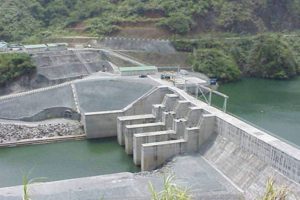SUBSIDIES provided to government-owned and -controlled corporations (GOCCs) fell 18.73% year on year in May to P7.92 billion, the Bureau of the Treasury (BTr) said.
The Treasury reported that month on month, May subsidies dropped 45.57% from April.
The National Government (NG) extends subsidies to GOCCs to help fund operational expenses not covered by their revenue.
In May, the National Irrigation Administration (NIA) topped the subsidy list with P3.54 billion or 44.72% of the total.
The National Electrification Administration received P1.25 billion and National Food Authority (NFA) P750 million.
The Philippine Fisheries Development Authority was granted P724 million in subsidies in May. It did not receive subsidies in the previous month.
State-run firms on the subsidy list included the Philippine Heart Center (P385 million), the Sugar Regulatory Administration (P208 million), the Philippine Coconut Authority (P170 million), the Philippine Rice Research Institute (P133 million), the National Kidney and Transplant Institute (P124 million), and the Philippine Children’s Medical Center (P120 million).
Other GOCCs obtaining subsidies exceeding P50 million include the Development Academy of the Philippines (P77 million), the Light Rail Transit Authority (P74 million), the Cultural Center of the Philippines (P60 million), the Lung Center of the Philippines (P59 million), the National Dairy Authority (P58 million), the Philippine Institute for Development Studies (P44 million), the Center for International Trade Expositions and Missions (P27 million) and the Philippine Institute of Traditional and Alternative Health Care (P20 million).
Those receiving less than P20 million were the People’s Television Network, Inc. (P18 million), the Metropolitan Waterworks and Sewerage System (P14 million), the Aurora Pacific Economic Zone and Freeport Authority (P10 million), the Philippine Tax Academy (P10 million), the Philippine Center for Economic Development (P9 million), and the Subic Bay Metropolitan Authority (P8 million).
The Southern Philippines Development Authority, The Tourism Infrastructure & Enterprise Zone Authority, and the Zamboanga City Special Economic Zone Authority all received P7 million in May.
Receiving no subsidies were the Land Bank of the Philippines, the Small Business Corp., the National Housing Authority, the National Power Corp., the Philippine National Railways, the Bases Conversion Development Authority, the Intercontinental Broadcasting Corp.-13, the Philippine Crop Insurance Corp., the Power Sector Assets and Liabilities Management Corp. (PSALM), and the Tourism Promotions Board.
“This could be part of the fiscal reform measures to (limit) subsidies to GOCCs (to) priority and mission-critical items for economic growth and development,” Rizal Commercial Banking Corp. Chief Economist Michael L. Ricafort said over the weekend.
In order to plug the budget deficit, profitable state-run firms with surpluses have been requested to remit more dividends, he said.
As of May 15, the Department of Finance had collected P76 billion in GOCC dividends.
In the first five months, the budget deficit widened 29.41% year on year to P523.9 billion, as the government accelerated spending on infrastructure and social programs.
In the first five months, GOCC subsidies hit P45.05 billion, down 21.03% from a year earlier.
The NIA was the top recipient in the five months with P15.34 billion. This was followed by PSALM (P8 billion) and the NFA (P3.75 billion).
In a separate report, PIDS, the government think tank, urged the government to repurpose the NIA’s idle irrigation water rights for broader public use, including household supply and other municipal needs.
PIDS reported that more than 1.3 million liters per second of irrigation water, intended for farmland — now goes largely unused as many agricultural areas have been converted into residential and commercial communities. — Aubrey Rose A. Inosante

